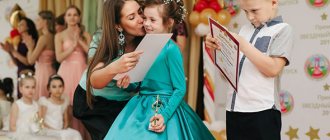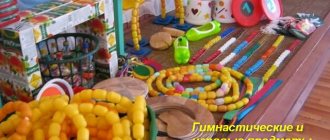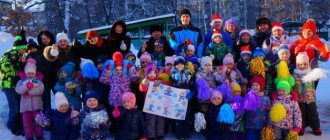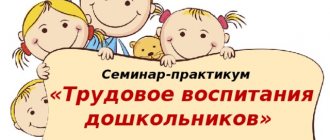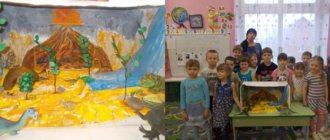The World of Preschool Children portal organizes a series of competitions for kindergarten students, as well as preschool students from additional education organizations. You can choose any competition and take part in it. Competitions are ongoing, and you can participate in any of them. The participants’ works are posted in competition albums in the group of the portal “The World of Preschool Children on the Odnoklassniki social network.” Therefore, you no longer need to post your work yourself.
Position
Founder of Competitions : Electronic media “Portal “World of Preschool Children”
Jury email address – [email protected]
The main goals and objectives of the competitions:
- awaken and unite the creative creative potential of preschool and preschool children;
- strengthen the prestige of the institute of training and education;
- develop the child’s creative abilities;
- identify gifted, creative, creative pupils and teachers of preschool and preschool educational institutions.
Advertising message
The topic of any competition material submitted to the competition must correspond to the name of the selected competition.
Conditions of participation in competitions.
- Select a competition in which your students will participate.
- Select works and photograph them.
- Fill out an application.
- Pay the registration fee if required by the terms of participation.
- Scan (or photograph) the payment receipt.
- All files – application, photographs of the work, scanned payment confirmation – should be archived. That is, all files must be in one folder and the folder must be archived. If several students of one teacher participate in this competition, then all works should be in one archive.
- Send the archived folder to the email address of the portal for competitions – [email protected]
Arrangement fee
The funds received from the organizational fee will be used for the development, execution of documents, and also for the development of the portal.
The payment amount is 40 (forty) rubles . for ONE children's work. If a teacher submits works from 5 participants to the competition, he will receive a letter of gratitude
The payment method for the registration fee is specified in the APPLICATION
TABLE OF COMPETITIONS
Dump truck
For this competition, you will need to provide each participant with a dump truck (you can buy identical small cars in a children's toy store). Near each participant there will be an identical pile of candies, for example. Each participant, at the command “start,” puts one candy in the back and carries it in the car along the floor to his mark (on the same line for everyone). Then he unloads the candy and goes for the next one. The first participant to transport all the candies on a dump truck will win and receive a prize.
Catch the bird
For this competition, masks of migratory birds or headdresses with images of such birds are first prepared. The presenter invites approximately 8-10 children. One is appointed as driver. The driver's task is to catch birds returning from wintering grounds, blindfolded. At the same time, children can tease the driver, trying to imitate the bird he got with his voice. Ducks, larks, swallows, cuckoos, starlings, herons, etc. usually return from wintering in the spring. The competition is guaranteed to be fun, since even if the child knows what sounds this or that bird makes, it will not be easy to reproduce them.
What do toys need?
All children love toys. A fun and exciting competition with your favorite friends. Each participant has the same row of toys in front of them, for example, a baby doll, a bear, a bunny, a car without a wheel, and so on. In general, everything that can be selected from the assortment of your own and borrowed toys. The point is that for each toy there will be an addition or a missing element, for example, for a baby doll - a pacifier, for a bear - a barrel of honey (a jar with the word “HONEY” written on it), for a bunny a carrot, for a car a wheel, and so on. So, the toys are in front of the participants, and on the command “start” the children each receive a bag with missing or complementary elements and distribute these parts among the toys. Whoever distributes everything faster and correctly will win.
Calendar holidays
A permanent competition for children aged 3-7 years. Dedicated to any calendar holiday that your kindergarten celebrates.
Competition nominations include drawings, crafts, appliqué, construction, and any creative manifestations of the child.Acceptance of work at any time. Send a letter with the materials of the competition works to the portal’s email with the note “Calendar holiday”. Summing up every week, sending out documents every subsequent MondaySmeshariki
Each participant receives an album sheet on which the same picture is drawn, namely all Smeshariki (Krosh, Nyusha, Hedgehog, Losyash, Sovunya, Kar Karych, Pin, Pandi). But, near each Smesharik there is a missing place where some item is missing. All children know Smeshariki and, with the help of their imagination and knowledge about these heroes, will remember and come up with what needs to be completed. So, at the “start” command, the children pick up a felt-tip pen and begin to draw one object for each Smesharik, for example, for Krosha - a carrot, for Hedgehog - glasses, for Pandi - a bow, for Sovunya - a ladle, and so on. The participant who is the first to complete the task and complete the drawings for everyone on the subject will be the winner. A prize can also be awarded to the most creative participant who will complete the drawing of the most “interesting” objects for the Smeshariki.
Who knows more?
Spring is a time of warmth, sunny days, a time of revitalizing nature, a time of flowers. Speaking of flowers. When welcoming spring, children can be invited to play a competition in which their main task is to help out the team, earn a point for it, and name a fairy tale related to flowers. The number of players in each team is 4-5 players. The presenter gives the children a few seconds to answer. If the player does not have time to give an answer, he is eliminated. The winner is determined by counting points. Examples of fairy tales: • Blue-Flower; • Stone Flower; • The Scarlet Flower; • Tale of the Flower Kingdom; • Seven-flowered flower; • Mouse and Snowdrop.
Apchhi
Everyone can participate in turn. The first person to come is invited and is blindfolded. Then the host points his finger at any guest, and he must imitate “apchhi” - sneeze. And the participant with his eyes closed must recognize the sneezing person by this sound and say his name, then the host points his finger at the other guest, he sneezes, the participant guesses, and so on 3 more times. The number of sneezes the participant can guess is how many points he will receive. Then the next participant is invited to participate. For him, too, 5 different guys take turns sneezing. And the participant guesses them by the sound “apchhi”. And in the end, the participant with the most points will be the winner.
I am an illustrator
Competition for children 3-7 years old. Drawings that reflect the name of the competition are accepted for the competition. You can illustrate any work that is interesting and familiar to the child.
Nominations – drawings of a child, subgroups of children, a collective drawing that reflects the name of the competition – "I am an illustrator."Acceptance of works – June 25, 2022 to August 31, 2018Summing up every week, sending out documents every subsequent Monday.
Accuracy test
Children are divided into teams with the same number of people. For each team, a row of 5 wide-necked jars is located at the same distance. Each team lines up in a separate row, each participant is given a small ball (bouncer). At the command “start”, starting with the first participants, the guys throw their ball, trying to get into the jar. He threw, and regardless of whether he hit or not, stand at the end of the team, the second participant’s turn is to throw, then the third, and so on. Only if you miss the mark, the presenter picks up the ball and hands it back to the participant. When the last participant has made the throw, and each jar still does not contain one ball, the first participant throws again, then the second. Participants take turns throwing throws until one of the teams fills all the jars, namely, throws a ball into each jar, that is, a prerequisite: there must be a ball in each jar. The team that manages to fulfill this condition first will be the winner.
“Competitive movement in a preschool educational institution as a means of development of students”
Kuznetsova S.U.
Senior teacher
Competitive movement in a preschool educational institution, as a means of developing pupils
Creativity begins when interest in activity appears, and all children are naturally inquisitive and full of desire to create, to discover something new. In the process of creative activity, perseverance, curiosity, determination, and the ability to choose the best way and method of doing work are developed.
The participation of children in competitions, olympiads and quizzes at various levels is one of the optimal conditions for the development of their creative potential.
A team of preschool teachers developed the “Ladder of Success” project, the goal of which was to create optimal conditions for identifying, supporting and developing the abilities of children with signs of giftedness in various types of activities and the formation of their personal and social self-realization.
To early identify and develop the giftedness of preschoolers, teachers at our preschool educational institution use a form of work called competitive movement. The competitive movement is an innovative development factor in education aimed at forming a versatile and full-fledged personality of the child, identifying, supporting and developing his abilities, as well as increasing the professional level and personal qualities of the teacher.
The educational opportunities of competitions and projects are enormous: the child develops his intellectual potential, improves search and research skills, develops creative thinking, memory, intellect, and imagination.
In our preschool educational institution, the competitive movement is developing in two directions:
1. Participation in competitions organized by the administration of the preschool educational institution. These are competitions at the educational organization and municipal level.
In the kindergarten, as part of the annual plan, competitions are organized, exhibitions of joint creative works of children and parents, children's drawing competitions, photo exhibitions, reading competitions, and sports competitions.
Every year, preschool children can take part in the vocal competition “Crystal Voice”, in the chess tournament “Magic Pawn”, in the creativity festival “Best of All!”, in the sports competitions “Cross of the Nation” and “Russian Ski Track”.
As a result of participation in preschool educational institution competitions, children develop creative abilities and show their own interest in participating in exhibitions, drawing and craft competitions; team spirit, a sense of camaraderie, and the desire to win are fostered; A healthy lifestyle is being promoted.
2. Participation in competitions organized by other organizations at different levels (municipal, regional and interregional) and Internet competitions.
As a result of participation in such competitions, children develop the ability to establish interaction and conduct dialogue not only with peers, but also with other participants in the competition; increasing self-esteem, nurturing a competitive spirit; creative search for problem solving together with parents increases; the ability to be sociable and self-confident.
Participation in online competitions is aimed at revealing children in various educational fields.
It will not be a revelation to anyone that performances at competitions are a powerful incentive for the further development of children.
Every child of our institution took part in at least one competitive event. There are children who systematically participate in them and become prize-winners at the municipal, regional, and All-Russian levels.
Competitions, including distance ones, motivate and stimulate the child to develop, learn new things and self-improvement, and the teacher to look for new technologies to enhance the cognitive activity of children. List of sources
1. Federal State Educational Standard for Preschool Education (FSES DO).
2. Afanasyeva V.N. Didactics for gifted children. Gifted child. – 2010. – No.
6. – P. 50.
3. Lyashko L.Yu. Development of a support system for talented children. Gifted child. – 2011. – No. 1. – P. 15.
4. Omarova V.K. Conceptual approaches to working with gifted children. Gifted child. – 2010. – No. 6. – P. 22.
A codeword
The guys come up with a code word together, for example, “corn.” Then the leader explains the rule: the leader gives commands, but these commands need to be executed only if the leader pronounces a code word before the command. For example, the leader says: “corn”, hands up, and the children raise their hands up, and if the leader says: jump on the left foot, the children should not follow the command, since the code word was not said. The leader must give commands quickly, trying to confuse the children, so that sooner or later someone will get confused and carry out the command without a code word. Anyone who executes a command without a code word is eliminated from the game, and the most attentive participants who remain in the game until the end are awarded prizes.
What are we talking about?
In advance, the teacher or presenter asks the children the meaning of words (how they understand them), for example, what is love? What is money? What is a circus? And so on. Then the presenter processes the information and, as they say, inserts a word from each child into the designation of each word. For example, this is when they hug, dance and eat together, buy each other gifts; this is something that you cannot do without in life, they are used everywhere, in cinemas, on attractions, in stores, this is something that some give, while others take, and so on. The presenter reads out the wording of each of the “secret” words in turn, and the parents must guess what they are talking about. There is a prize for the parent for the correct answer.
Heels and toes
The guys are divided into equal numbers of team members. Each team stands in a separate row (one after the other). At the same distance from each team there is a chair with the same number of candies (the number of candies is equal to the number of team members). The presenter explains a simple rule: the first participants run on their toes, the second - on their heels, the third on their toes, the fourth - on their heels, and so on through one on their toes - on their heels. At the command “start”, the first participants run on their tiptoes to their chair, take the candy and run back to their team, pass the baton to the second participants and stand at the end of the team. Then the second participants run, only on their heels, take the candy and back to their team, pass the baton and stand at the end of the team. The team that runs faster than the rest on their toes and heels and collects all their candies, and the first participant in the team will again be in first place and become the winner.
Dancing fence
Traditionally, spring is celebrated with songs and dances, so the holiday is indispensable without a dance competition. This competition involves two teams of 6 people. Each team stands in a line facing each other. It is advisable to first make a musical selection of cuts of incendiary folk melodies. The rules of the game are simple. 1. As soon as the first melody sounds, the first team members come forward, they need to dance to the music, trying to do it in an original way, without repeating the opponent’s movements. 2. As soon as the music stops playing (the melody ends suddenly and abruptly), the children bow and return to their place. 3. The second participants in the line of teams begin to compete with the new melody. 4. Returning to the line, the child must “braid the fence” (clasp hands with a neighbor, the previous participant). 5. If a player hesitates and stops dancing or repeats the opponent’s movement or forgets to bow, the player leaves the competition. You need to out-dance your opponent. The team that has more participants left before the end of the competition and whose fence is the longest wins.
fontanel
A fun game that can be played by a large number of children, up to 10 people. All players need to line up in one column. Each child places his hands on the belt of the person in front. A fontanelle is placed on the side, which can be marked with two ropes or ribbons. Rules of the game. 1. To the music, children stand still, getting ready to jump. 2. As soon as the music suddenly stops, you need to jump sideways without removing your hands from the belt of the person in front. 3. When jumping, you need to prevent the player in front from successfully jumping over the fontanel. 4. Those players who touched the “spring water” are eliminated. 5. The game continues until one of the most lively and persistent participants remains, who is declared the winner.
Word by word
Another competition that will allow you to take a break from active games. Here the winner is the one who can boast of a good memory. The presenter invites 5-6 people who sit in a circle. The game then proceeds according to the following rules. 1. The first participant names a word related to the spring theme. For example, “sun”. 2. The second person names a word from the same topic starting with the letter with which the second word ends. But before you name it, you need to repeat the previous one. For example, say “sunshine-thaw”. 3. The third player comes up with a spring-themed L word, repeating the previous two words. For example, “sun-thaw-rays”. 4. As the game progresses, those participants who cannot cope with the task are eliminated. 5. The competition continues until the winner is determined, until one player with the best memory and ingenuity remains.
Bird houses
An outdoor game in which children of all ages can take part. You need to invite 4 pairs who will form bird houses (holding hands, raising them up, depicting the roof of the house). There are houses, now children are invited to play the role of birds. There should be more of them than houses. With music playing quietly in the background, the presenter says: “Birds are flying... flying,” the children move around the room. As soon as the leader says: “The rain has started,” the children must run to the house, standing under its roof, that is, under the raised hands of other children. Those who do not have enough space are eliminated. The fewer birds left, the fewer houses left. The game is played according to the principle of the classic game “Take a Chair”.
